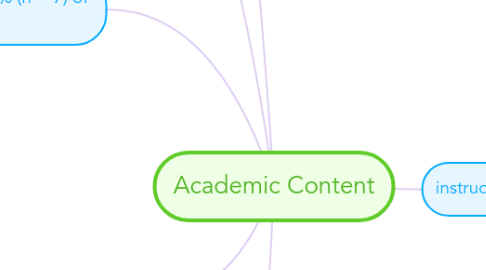Academic Content
por jenny ma


1. Natural sciences (27 % (n=19) of the studies)
1.1. M-learning system prompted students to observe and recognize the characteristic features of the plants in a botany science lesson
1.2. Created a mobile plant learning system (MPLS) that supported botany learning at the elementary school level
1.3. Explored the situated learning opportunities offered bymobile devices by connecting the complex scientific content with field observations
1.3.1. Investigated experiential learning with fifth graders using PDAs in the authentic study of plants
1.3.2. Improve science learning
1.3.3. Enhance motivation
1.3.4. Serve as an engaging tool for learning science content in a situated experiential outdoor environment
1.3.5. Developed a self-assessment tool for physics, technology, and nursing students
1.4. Outdoor learning had a positive impact on student performance in environmental education
1.5. PDAs and location-aware devices motivated elementary students and improved their performance in science
1.6. Identified PDA use for outdoor learning in the school garden
1.7. Investigated the effects of cognitive load in environmental science education with PDAs
1.8. Investigated the effects of visual cuing support for fifth graders learning plant leafmorphology
2. Mathematics (17% (n = 11) of studies)
2.1. A mobile learning intervention that relied on drill and practice approaches for third grade students improved multiplication abilities
2.2. Examined the collaborative learning opportunities provided by mobile devices in learning field-based geometry concepts
2.3. Investigated student learning modes, connections of the learning to real life outside of the classroom, and how these impacted mobile learners
2.4. Investigated the emotional changes students experienced toward mathematics
3. Social studies (11% (n = 7) of studies)
3.1. Examined bridging museum learning with classroom learning
3.2. Examined contextual learning by mixing real and virtual environments
3.2.1. using the mobile guide system exhibited more interactions with peers and the exhibits than students having audiovisual system or paper-based guided learning sheets
3.3. Examined role playing and problem-based learning through game play
4. Language arts (n = 9 studies)
4.1. Text messaging improved literacy skills
4.1.1. Investigate whether there were any differences in frequency of text messaging between good and poor readers
4.1.2. Described and quantified the effect text-messaging abbreviations had an overall literacy skills
